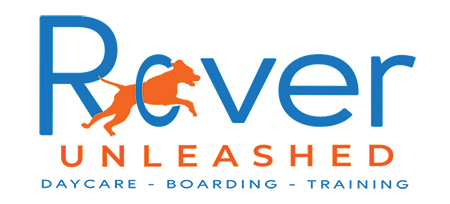There’s a lot of information available regarding nutritional supplements and dogs. It may seem overwhelming to read through the information about canine nutrition and decide what you dog needs versus what he doesn’t.
Several key nutrients are missing from processed, shelf stable dry kibble that are important for your dog’s health. Supplementation can add these missing nutrients back into your dog’s diet and help support his overall health and well-being. Supplementation is one of the keys to preventative care. The goal is to help support your dog’s health so he can live a long and happy life.
Typically you won’t see major health issues in younger dogs since they are resilient creatures. As dogs age, you may see signs and symptoms of health conditions emerging. If your dog has a sign or symptom, it is his body’s way of saying there is an underlying imbalance that needs to be corrected. If you notice your dog exhibiting a new sign or symptom that is concerning, always consult your veterinarian.
Here’s five essential supplements to boost your dog’s nutrition if they are eating dry kibble.
#1 Omega Fatty Acids
Essential fatty acids, Omega 3s and Omega 6s are polyunsaturated fats vital to your dog’s diet because dogs can’t produce them endogenously and they need to get them from a food source. Omega 3 fatty acids have a powerful anti-inflammatory effect and Omega 6s also help promote healthy, normal growth and development of skin, hair, bone and nervous tissue. Omega 6s can promote inflammation but when balanced with Omega 3s allow for optimal metabolism.
Dry kibble is produced by a high temperature extrusion process and most pet food companies aren’t adding Omega 3s back into the food because they’re expensive and aren’t shelf stable. If you look on the back of a bag of dry kibble, you’ll see a guaranteed analysis of the product. Most of the polyunsaturated fats that included in dry kibble are Omega 6 fatty acid that tend to be pro-inflammatory.
Great sources of Omega 3s are fish, krill and anchovies and grass fed meat (including organ meat). Omega 6 fatty acids can be found in nuts, seeds, meats and flaxseed and certain type of vegetable oils. You may want to consider supplementing your dog’s diet with a ready to use product with a balance of essential fatty acids as this is an easy way to ensure your pup is getting these important nutrients in his diet.
#2 Joint Support
In the wild if a dog devoured his prey, he would eat the joint capsule, joint fluid, and the cartilage caps of the bones. After ingesting it, it would nourish his joints providing them the building blocks needed for joint health: glucosamine, hyaluronic acid, and chondroitin. Glucosamine can be thought of as the precursor to chondroitin and hyaluronic acid. Chondroitin is the spongy part of the cartilage, giving cartilage its structure and the ability to resist compression. Hyaluronic acid is a component of synovial fluid that lubricates joints and helps to reduce friction between those joints during movement.
There is no kibble in existence that has adequate levels of joint-supporting ingredients like glucosamine, chondroitin and hyaluronic acid. Do not buy into any dog food with joint supplement claims. If your pup is living on dry food alone, they need an alternative source for these joint fluids, and they won’t find them in a bag of kibble.
Add whole foods like fermented fish stock or raw chicken necks to their diet or consider a joint supplement that offers therapeutic levels of glucosamine and chondroitin, MSM, hyaluronic acid, and anti-inflammatory herbs to cater to all of the components of a joint – synovial fluid, connective tissue, and cartilage.
#3 Healthy Gut = Healthy Dog
Gut health is entwined with bowel and anal gland health and intestinal wellbeing as a whole. An overgrowth of bad bacteria in the gut is often to blame for symptoms like bloating, stinky gas, even occasional diarrhea, but that can be changed with probiotics. Live probiotics flood the gut, helping to fend off bad bacteria that take up residence there.
In shelf stable foods like kibble though, the FDA has a zero-tolerance policy for bacteria within the food and that’s any pathogen- E. coli, listeria, or salmonella. In the process of eliminating pathogens, good, healthy bacteria that’s necessary for a good gut biome is also destroyed. So, when you’re feeding a sterile food, you’re not giving them pathogens, which is great, but you’re also not giving them the beneficial “good” bacteria that the gut biome needs.
Pet foods have begun adding probiotics, which is a step in the right direction, but you have to question the efficacy of them. Most probiotics on the market are live microorganisms kept in a dormant state. Keeping them dormant until they’re ready to be used ensures that the dosage and potency are uniform because they have such a limited lifespan- 2 weeks to be exact. As soon as they come in contact with moisture, even from the air, they come to life. If they aren’t packed and sealed, there is a real chance that those beneficial bacteria will be spent before your pup even has a chance to benefit from them.
The best probiotic for dogs has enough culture-forming units (CFUs) to travel the entire digestive tract, from the stomach to colon, so your pup has the support he needs. A probiotic should also be accompanied by prebiotics to feed those probiotics so they can reproduce and outnumber harmful bacteria.
#4 Dental Health
As carnivores, dogs have physiological traits developed specifically for what they’re meant to eat. They have tightly-interdigitated teeth for ripping and tearing prey, a shortened gastrointestinal tract to digest raw meat, and little to no salivary amylase (i.e. the enzyme that breaks down sugars or carbohydrates). So, dogs eating kibble tend to consume more carbohydrates which contributes to dental tartar.
That breath-takingly unbearable doggy breath for example, is often due to tartar buildup and bacteria on the surface of the teeth. Tartar is a lovely combination of minerals, food particles, and bacteria that likes to gather at the gingival surface where the tooth and gum meet. When the gum line becomes irritated and inflamed it leads to gingivitis. Once the gums are irritated and swollen, bacteria are free to make its way into the bloodstream which can cause a whole host of issues. That’s why oral health isn’t just about that foul doggy breath.
Switching to a raw or freeze-dried food with low carbohydrates can drastically help dog breath tartar buildup. To address the tartar buildup that’s already there, consider dental chews for dogs that tackle tartar at the upper gumline, where bacteria like to cozy up.
#5 A Daily Dose of Antioxidants
While I’d encourage every pet parent to toss fresh food into their pup’s bowl at every age, this one becomes exponentially more important for aging and senior dogs. Antioxidants can come from either what we produce in our own bodies as well as what we consume in our diets. As we age, our own endogenous antioxidant levels start to decrease and if we don’t increase our dietary antioxidant levels, then our bodies are open to damage from free radicals and oxidative stress that leads to premature aging, to cancer formation, that leads to hypersensitivity of the immune system which is damaging to good cells as well as bad cells. Supplementing antioxidants can be as easy as adding brightly-colored fruits and vegetables to their bowl every day. Or consider antioxidant supplements with incredibly concentrated amounts of antioxidants from whole foods.
Joint care, more omegas, gut health, pearly whites, and a daily dose of antioxidants– these are easy additions to help every kibble-fed dog live a more vibrant, healthy life.

